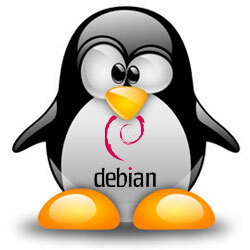I would prefer something based on Debian, like Ubuntu or PopOS, but I’m open for other suggestions as well, as I’m looking for a distro to daily-drive on my new Framework laptop.
I know you said you want something Debian-based, but Fedora is my go-to distro for daily driver workstations. Rock solid, has up to date software, and the release upgrade process has never failed me.
this, fedora has been very straightforward with me and just works, (except when I tried to sign kernels and crazy stuff to get virtual machines working, however that was all on me lol)
Fedora is so wonderful! It also proved to be quite useful for me to use Fedora on my home desktop, as a lot of my work lately has involved working with a RHEL server. It’s awesome to already know 99% of what that computing environment is like just from using my desktop.
deleted by creator
Agreed on Fedora, it’s an awesome distro.
So, I know I could just look this up and get answers off google, but for the sake of conversation, why do you prefer Fedora over something like say, Mint?
I have bounced around through several distros (Mint, Ubuntu, Arch, Pop, a bit of Slack), and have always found something in each that could draw me in. What does it for you in Fedora?
Fedora is pretty cutting edge (updating package versions every 6 months), while still being rock solid. The release upgrade is also the most reliable one I’ve had to deal with - I successfully upgraded an ancient install by 10 versions once.
Gotcha. For those that are happy with the upgrade process and stability of what they are on though, is there anything that makes it more enticing?
I may end up giving it a go just to round out my experience with the various flavors and get some real experience with RPM.
Here are my two eurocents:
- Fedora Workstation, the main spin of Fedora which uses Gnome, is a very polished experience. I’d use it, if I were a fan of Gnome.
- Fedora Silverblue is an “immutable desktop”, i.e. the operating system is read-only while all user applications isolated from it via flatpaks. It is supposed to make the system more secure, stable, easier to update etc. It’s a cool idea, but I haven’t tried it myself.
Other than that? Not much. As you probably know, most distributions feel pretty much the same, Fedora included.
Honestly, Linux is Linux. Once you’re comfortable enough, that’s really all that differentiates distros between each other. (Minus weird shit like glibc vs musl, nixOS, etc) It’s just been the closest experience I’ve had to “it just works” when it comes to Linux desktop.
I should also shout out that Fedora tends to embrace existing standards rather than make their own (cough Cannonical cough Snap). I’m also a big fan of some Fedora projects, particularly Fedora Silverblue
I don’t think distro choice is that important. If you’re already comfortable with something deb based get that.
yeah, but I’m open to trying something completely new as I’m getting my new laptop
You’ve named three great suggestions. There was a new stable Debian release two days ago. A decade ago, I found Debian stable a bit too stale and testing buggy, but things have changed for the better with flatpak being as ubiquitous as it is.
Just make sure to get the non-free firmware iso if you think you might need it for something like wifi.
I find snap on Ubuntu annoying, slow and the cli tool cryptic. I’d probably use PopOS in preference to Ubuntu just because of that.
Finally, the difference between using a Debian vs Fedora vs Arch derivative isn’t as much as it’s hyped up to be. It’s really the release cycle and QA that matter and that’s personal taste.
Why not directly Debian ?
This is the way. Why go through middle man when you can go straight to the source.
Just remember, stable is for servers, testing is for workstations.
Stable isnt just “for servers”. I run stable on my laptop as well
OP said they dont need it for gaming, so you dont need the latest, shiniest things. Stable + backports should be good enough for most people unless you’re doing some really specialized work
Also flatpak may be a convenient way to get the latest and shiniest on Stable.
deleted by creator
Exactly. The newest LTS just released. Not cutting edge, but well supported and very stable.
Exactly. The newest LTS just released. Not cutting edge, but well supported and very stable.
Pop!_OS. I use it on my laptop and the track pad gestures are a treat. Also, stability and performance are as expected and the devs are really cool.
Consider Fedora Linux! It strikes a thoughtful balance between being up-to-date (e.g. Arch) vs stable (e.g. Ubuntu LTS): its kernel and packages are very recent but tested thoroughly on the system before release.
Fedora is also known for pushing forward new Linux technologies like Wayland, Pipewire, Flatpak, as well as the latest versions of GNOME.
I use Fedora on my Framework laptop, and it works great! Specifically, I use Silverblue, an official variant that makes the system immutable and image-based, which has various stability/maintenance benefits.
Whatever distro you choose, be sure to check Framework’s docs for setting it up: https://frame.work/linux
Mint is great, it comes pre loaded with a lot of the basics and has got to be one of the most easy to recommend options out there. If you do go with Mint I would highly recommend adding flatpaks for anything proprietary if you use things like Spotify, Discord, or other similar stuff (you probably will want to make sure that gets updates imminently since those kinds of services usually update quickly and somewhat sporadically). Mint is based on Ubuntu but is without all the Telemetry and forced snaps.
Alternatively, if you want a more basic install (pros: less bloat, cons: more manual work) Debian itself would work great. It’ll probably eek out a tiny bit more performance and slightly faster security updates than anything downstream. I like manually installing by starting from zero, but I can understand if you want a “plug and play” option and want a Debian derivative instead.
Ubuntu is also fine. I’m still salty about seeing Amazon ads on my search screen a while back, but in all reality it would work just fine, you can still opt out of the Telemetry, and if you prefer Snaps over Flatpaks then it’d be a good choice to go with. If you don’t know of or care about snaps or flatpaks then in all reality either should work fine for you.
I’ve never used PopOs. I’m sure it’s fine, though I’ve heard people online complain it’s a bit unstable sometimes as compared to the more established Debian based distros. Can’t say either way though since I haven’t used it.
Beyond Debian, like some people are saying here too, Fedora is an option. It’s not Debian based and might have a bit of a higher learning curve (both if you’ve never used Linux or if you learned on Debian based Linux). Their packages and device drivers are usually a bit more up to date. That said, as they move more towards Flatpaks instead of traditional package management that benefit is eroding a bit. But if you do find yourself needing more current packages (and can’t solve with flatpaks/snaps), or have a device with drivers too new for Debian and it’s derivatives, then Fedora would be the first place I’d recommend going.
Last, Manjaro might be an option as well (also not Debian based). Honestly I’ve heard a lot of bad things about it and never used it, but a co-worker likes it so it’s worth a mention. It’d be great if you need really recent drivers, but if you don’t know what you’re doing (so I’ve been told) you probably want to be cautions of the AUR.
If you have the time I’d recommend firing up a virtual machine and checking anything that sound interesting. Good luck!
i would also say mint. i personally used manjaro, and have not found major problems using it as a non power user. most software you would need as a standard user are persent in the build in software center, which is pretty easy to use
Kubuntu
generally any distro would work, my suggestion would be to find one you like and stick with that.
distro doesn’t matter nearly as much nowadays as
distroboxandflatpakwill make most of the programs available on almost any distro.Tumbleweed
If you want something that ‘just works’ on a framework, I recommend Fedora 38. Everything from the touchpad gestures to the fingerprint reader work out of the box and I didn’t even need to dig into the terminal to configure.
dnf is really easy to use and works similarly to apt. Apps and programs stay reasonably up to date without breaking anything, and if you need a more recent version, Flatpack is installed already.
Pop_OS has the most impressive window management I’ve ever seen in any distro. It’s a joy to use on laptops. And since it’s based in Ubuntu you’ll have no trouble finding support.
Depends on how tech-savvy you are and what DE you like.
- You don’t like to tinker much, but want a system that just works with sane defaults? Mint it is
- You want to know how a Linux system works or might want to fine tune and put your own bits and pieces together? Debian
Those are the two I usually recommend. I don’t like Ubuntu, because Canonical has a history of enforcing its experiments on users and disregards them after some years. Fedora does that more subtle, but I’m not a fan of flatpaks and that you basically cannot find most of the programs I’m used to from other distros in the package manager.
In the end I’d say that most users should be more focused on the decision what desktop environment they want to use, because that influences your day-to-day work more than the distro (after you have set it up to your liking, of course).
Either PopOS or Fedora would be my choice for a no hassle distro. The new Cosmic DE that System76 is making for PopOS looks pretty nice.









